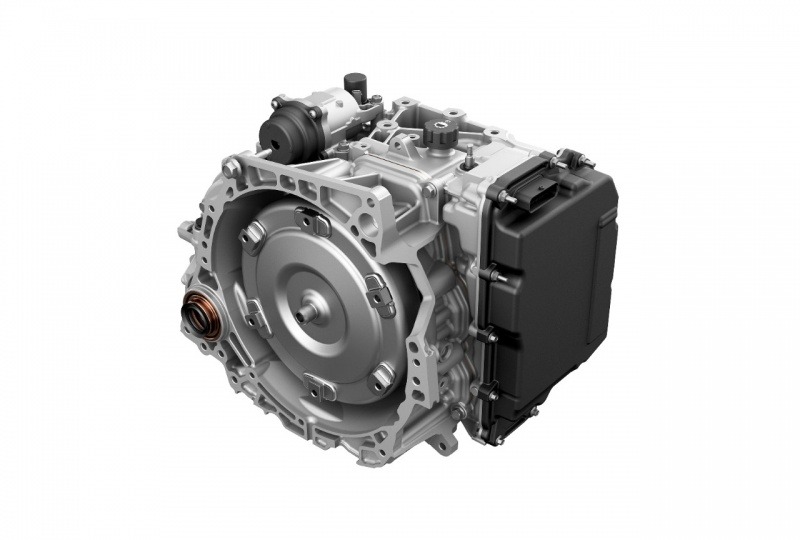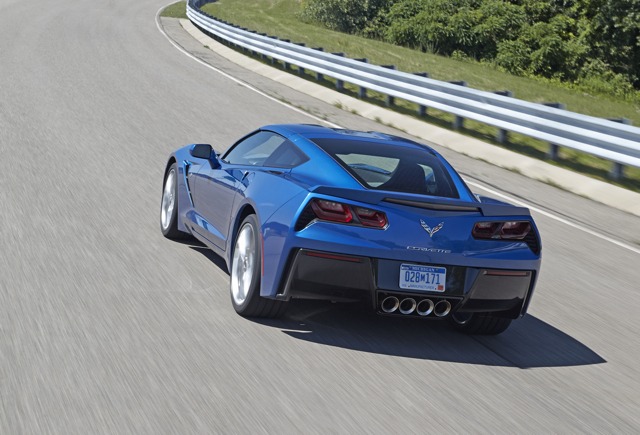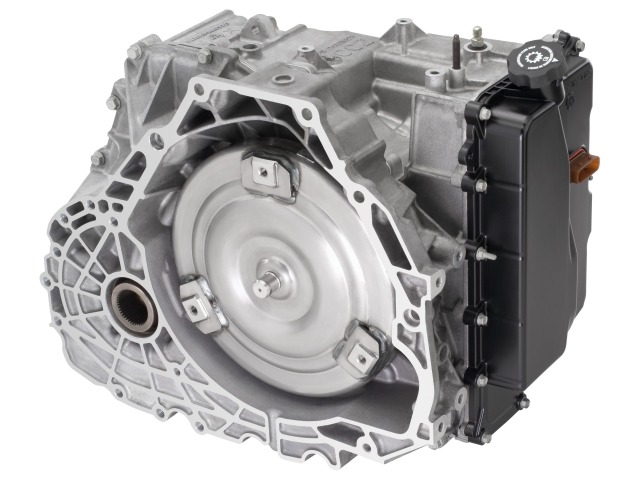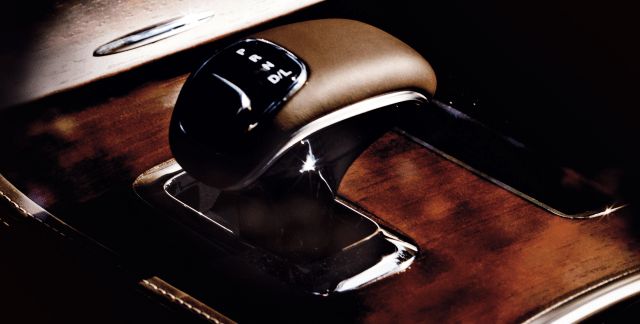Search the Community
Showing results for tags 'automatic'.
-
In April of 2013, Ford and General Motors announced they would be working together on developing new nine and ten-speed automatic transmissions. The nine-speed automatic would be for front-wheel drive models, while rear-drive models got the ten-speed. Already, a number of Ford and GM vehicles are using the ten-speed. But GM will be the only one using the nine-speed. Automotive News reports that Ford is electing to use a new series of eight-speed automatic transmission on their vehicles. The company said the new nine-speed didn't provide enough of an improvement in fuel economy to justify the added cost and weight. According to a source, Ford made this decision before GM began to use this transmission on their production models. "Typically, if anyone gave me a transmission that didn't require much work, outside of tuning it for a specific vehicle, I would take it and run. It's a lot of design work after the fact to come up with their own flavor. It shows there might be some different schools of thought in terms of transmission efficiency," said Dave Sullivan, an analyst with AutoPacific Inc. While GM claims the nine-speed brings “smoother shifts” and a better driving experience, it hasn't brought any real gains to fuel economy. The 2017 Chevrolet Malibu 2.0T only saw an increase of one mpg on the highway when compared to the 2016 model with a six-speed automatic (33 vs. 32). The 2019 Buick Envision 2.0T saw its highway fuel economy drop by one when equipped with the nine-speed auto (25 vs. 26). It should be noted that one of the eight-speed transmissions Ford is using is based on the new nine-speed, minus a gear. Source: Automotive News (Subscription Required)
-
In April of 2013, Ford and General Motors announced they would be working together on developing new nine and ten-speed automatic transmissions. The nine-speed automatic would be for front-wheel drive models, while rear-drive models got the ten-speed. Already, a number of Ford and GM vehicles are using the ten-speed. But GM will be the only one using the nine-speed. Automotive News reports that Ford is electing to use a new series of eight-speed automatic transmission on their vehicles. The company said the new nine-speed didn't provide enough of an improvement in fuel economy to justify the added cost and weight. According to a source, Ford made this decision before GM began to use this transmission on their production models. "Typically, if anyone gave me a transmission that didn't require much work, outside of tuning it for a specific vehicle, I would take it and run. It's a lot of design work after the fact to come up with their own flavor. It shows there might be some different schools of thought in terms of transmission efficiency," said Dave Sullivan, an analyst with AutoPacific Inc. While GM claims the nine-speed brings “smoother shifts” and a better driving experience, it hasn't brought any real gains to fuel economy. The 2017 Chevrolet Malibu 2.0T only saw an increase of one mpg on the highway when compared to the 2016 model with a six-speed automatic (33 vs. 32). The 2019 Buick Envision 2.0T saw its highway fuel economy drop by one when equipped with the nine-speed auto (25 vs. 26). It should be noted that one of the eight-speed transmissions Ford is using is based on the new nine-speed, minus a gear. Source: Automotive News (Subscription Required) View full article
-
The Honda Civic Type R is only available with a six-speed manual which limits the possible group of buyers. But according to CarAdvice, Honda was considering an automatic option of some sort for the Type R. Yuji Matsumochi, assistant large project leader for the 10th-generation Civic's powertrain told the Australian outlet that the Japanese automaker was looking at offering either a conventional automatic or a dual-clutch transmission to broaden the appeal for buyers. But the decision was made to only offer a manual due to weight concerns. “The Type R needs a lightweight powertrain because it is front-wheel-drive, and needs lightweight powertrain systems. So, the engine is a little bit heavy, so the transmission side needs to be more lightweight,” said Matsumochi. “If we applied an automatic transmission, or dual-clutch transmission, for a 400Nm engine, it would be very heavy weight, and very big. The front weight would be very heavy.” Source: CarAdvice
- 16 comments
-
- automatic
- civic type r
-
(and 3 more)
Tagged with:
-
The Honda Civic Type R is only available with a six-speed manual which limits the possible group of buyers. But according to CarAdvice, Honda was considering an automatic option of some sort for the Type R. Yuji Matsumochi, assistant large project leader for the 10th-generation Civic's powertrain told the Australian outlet that the Japanese automaker was looking at offering either a conventional automatic or a dual-clutch transmission to broaden the appeal for buyers. But the decision was made to only offer a manual due to weight concerns. “The Type R needs a lightweight powertrain because it is front-wheel-drive, and needs lightweight powertrain systems. So, the engine is a little bit heavy, so the transmission side needs to be more lightweight,” said Matsumochi. “If we applied an automatic transmission, or dual-clutch transmission, for a 400Nm engine, it would be very heavy weight, and very big. The front weight would be very heavy.” Source: CarAdvice View full article
- 16 replies
-
- automatic
- civic type r
-
(and 3 more)
Tagged with:
-
So in cruising the alternative world I found on the Green Car reports two stories about Ford having an 11 speed transmission which they have filed a patent for; http://www.greencarreports.com/news/1097339_ford-patent-for-11-speed-automatic-transmission-wars-escalate Fiat having a 40 mpg 500 with 11 speed transmission; http://www.greencarreports.com/news/1097766_electric-car-battery-costs-40-mpg-surprise-11-speed-automatic-todays-car-news So with battery cost falling and the transmission war kicking in. I wonder how high we will see these transmissions go?
-
2015 brings a big change for the Chevrolet Corvette Stingray as the six-speed automatic transmission says adiós and the eight-speed automatic says hello. The new eight-speed features a more aggressive first gear ratio and lower rear axle ratio. This allows the 0-60 MPH time to drop from 3.8 to 3.7 seconds and a improved quarter mile time of 11.9 seconds (times are for the Corvette Stingray equipped with the Z51 package). Fuel economy also sees a slight bump with Corvette Stingray now getting 29 MPG on the highway. City and combined numbers are still the same (16 and 20 MPG respectively). "The Corvette Stingray is a great example of how we are leveraging engineering and technology to improve both efficiency and performance. No other car can match 460 horsepower, 0-60 mph in better than 3.7 seconds, and 29 mpg on the highway," said Mark Reuss, GM executive vice president, Global Product Development, Purchasing & Supply Chain in a statement. Source: Chevrolet William Maley is a staff writer for Cheers & Gears. He can be reached [email protected] you can follow him on twitter at @realmudmonster Press Release is on Page 2 8-Speed Automatic Makes Corvette Faster, More Efficient DETROIT – The all-new, paddle-shift eight-speed automatic transmission makes the 2015 Corvette Stingray faster and more fuel efficient, with 0-60 acceleration of only 3.7 seconds and an EPA-estimated 29 mpg on the highway. "The Corvette Stingray is a great example of how we are leveraging engineering and technology to improve both efficiency and performance," said Mark Reuss, GM executive vice president, Global Product Development, Purchasing & Supply Chain. "No other car can match 460 horsepower, 0-60 mph in better than 3.7 seconds, and 29 mpg on the highway." The Stingray's 0-60 performance is 0.1-second quicker than the previous six-speed automatic, contributing to a quicker quarter-mile elapsed time of 11.9 seconds – a 0.1-second improvement over the six-speed auto. Its 29-mpg highway rating represents a 3.5-percent increase over the six-speed. New eight-speed models are EPA-rated at 16 mpg in the city and 20 mpg combined. In fact, the Stingray's stingy fuel consumption on the highway is not only better than sports car competitors such as Porsche 911 Carrera (28 mpg), Audi R8 V-8 (20 mpg), Jaguar F-Type R (23 mpg) or Nissan GT-R (23 mpg), it tops conventional cars with smaller engines, like the Subaru Outback six-cylinder (27 mpg), Volkswagen Passat six-cylinder (28 mpg) and Mercedes-Benz C350 coupe (28 mpg). The greater performance and efficiency enabled by the available, GM-developed Hydra-Matic 8L90 eight-speed automatic is due primarily to its 7.0 overall gear ratio spread, which enhances off-the-line performance with a more aggressive first gear ratio – 4.60 vs. 4.03 on the six-speed – helping achieve the quicker 0-60 time. It also delivers world-class shift times that rival the best dual-clutch design. Combined with a new, numerically lower 2.41 rear axle ratio vs. the 2.56 gear used with previous six-speed automatic models, engine rpm is reduced by 8 percent (123 rpm) on the highway at 70 mph. The lower engine speed reduces fuel consumption. Z51-equipped models retain a 2.73 rear axle ratio. The new paddle-shift eight-speed automatic complements the performance generated by the Corvette Stingray's LT1 engine – rated at 455 horsepower or 460 horses with the available performance exhaust system – which uses advanced technologies including direct injection, variable valve timing and Active Fuel Management (cylinder deactivation) to make more power with less fuel. Advanced composite materials in the body structure and a lightweight aluminum frame, as well as aluminum and magnesium suspension components, support the Corvette's efficiency with a low curb weight of only 3,298 pounds /1,499 kg (Stingray coupe). They also enhance performance by giving the Stingray an excellent power-to-weight ratio of 7.25 – or one horsepower for every 7.25 pounds of mass. That's better than Porsche 911 Carrera's 8.7 ratio and Audi R8 V-8's 8.3 ratio. For those who prefer a traditional manual-shifting driving experience, the 2015 Corvette Stingray is available with a seven-speed manual that delivers 0-60 times of 3.8 seconds and EPA-estimated 29 mpg on the highway. View full article
-
2015 brings a big change for the Chevrolet Corvette Stingray as the six-speed automatic transmission says adiós and the eight-speed automatic says hello. The new eight-speed features a more aggressive first gear ratio and lower rear axle ratio. This allows the 0-60 MPH time to drop from 3.8 to 3.7 seconds and a improved quarter mile time of 11.9 seconds (times are for the Corvette Stingray equipped with the Z51 package). Fuel economy also sees a slight bump with Corvette Stingray now getting 29 MPG on the highway. City and combined numbers are still the same (16 and 20 MPG respectively). "The Corvette Stingray is a great example of how we are leveraging engineering and technology to improve both efficiency and performance. No other car can match 460 horsepower, 0-60 mph in better than 3.7 seconds, and 29 mpg on the highway," said Mark Reuss, GM executive vice president, Global Product Development, Purchasing & Supply Chain in a statement. Source: Chevrolet William Maley is a staff writer for Cheers & Gears. He can be reached [email protected] you can follow him on twitter at @realmudmonster Press Release is on Page 2 8-Speed Automatic Makes Corvette Faster, More Efficient DETROIT – The all-new, paddle-shift eight-speed automatic transmission makes the 2015 Corvette Stingray faster and more fuel efficient, with 0-60 acceleration of only 3.7 seconds and an EPA-estimated 29 mpg on the highway. "The Corvette Stingray is a great example of how we are leveraging engineering and technology to improve both efficiency and performance," said Mark Reuss, GM executive vice president, Global Product Development, Purchasing & Supply Chain. "No other car can match 460 horsepower, 0-60 mph in better than 3.7 seconds, and 29 mpg on the highway." The Stingray's 0-60 performance is 0.1-second quicker than the previous six-speed automatic, contributing to a quicker quarter-mile elapsed time of 11.9 seconds – a 0.1-second improvement over the six-speed auto. Its 29-mpg highway rating represents a 3.5-percent increase over the six-speed. New eight-speed models are EPA-rated at 16 mpg in the city and 20 mpg combined. In fact, the Stingray's stingy fuel consumption on the highway is not only better than sports car competitors such as Porsche 911 Carrera (28 mpg), Audi R8 V-8 (20 mpg), Jaguar F-Type R (23 mpg) or Nissan GT-R (23 mpg), it tops conventional cars with smaller engines, like the Subaru Outback six-cylinder (27 mpg), Volkswagen Passat six-cylinder (28 mpg) and Mercedes-Benz C350 coupe (28 mpg). The greater performance and efficiency enabled by the available, GM-developed Hydra-Matic 8L90 eight-speed automatic is due primarily to its 7.0 overall gear ratio spread, which enhances off-the-line performance with a more aggressive first gear ratio – 4.60 vs. 4.03 on the six-speed – helping achieve the quicker 0-60 time. It also delivers world-class shift times that rival the best dual-clutch design. Combined with a new, numerically lower 2.41 rear axle ratio vs. the 2.56 gear used with previous six-speed automatic models, engine rpm is reduced by 8 percent (123 rpm) on the highway at 70 mph. The lower engine speed reduces fuel consumption. Z51-equipped models retain a 2.73 rear axle ratio. The new paddle-shift eight-speed automatic complements the performance generated by the Corvette Stingray's LT1 engine – rated at 455 horsepower or 460 horses with the available performance exhaust system – which uses advanced technologies including direct injection, variable valve timing and Active Fuel Management (cylinder deactivation) to make more power with less fuel. Advanced composite materials in the body structure and a lightweight aluminum frame, as well as aluminum and magnesium suspension components, support the Corvette's efficiency with a low curb weight of only 3,298 pounds /1,499 kg (Stingray coupe). They also enhance performance by giving the Stingray an excellent power-to-weight ratio of 7.25 – or one horsepower for every 7.25 pounds of mass. That's better than Porsche 911 Carrera's 8.7 ratio and Audi R8 V-8's 8.3 ratio. For those who prefer a traditional manual-shifting driving experience, the 2015 Corvette Stingray is available with a seven-speed manual that delivers 0-60 times of 3.8 seconds and EPA-estimated 29 mpg on the highway.
-
By William Maley Staff Writer - CheersandGears.com April 15, 2013 Back in October, we reported that Ford and General Motors signed a memorandum of understanding to jointly develop next-generation nine and ten-speed automatic transmissions. Today, both auto manufacturers have gone on the record and confirmed this joint operation. The two automakers aren't saying which specific vehicles will get the nine and ten-speed transmissions, but did say the transmissions are designed for front- and rear-wheel-drive cars, crossovers, trucks and SUVs. "Engineering teams from GM and Ford have already started initial design work on these new transmissions," said Jim Lanzon, GM vice president of global transmission engineering in a press release today. This joint operation marks the third time the automakers have worked together. Previous efforts have included building six-speed automatics found in the Ford Fusion, Ford Explorer, Chevrolet Cruze, Chevrolet Malibu and few others. "The goal is to keep hardware identical in the Ford and GM transmissions. This will maximize parts commonality and give both companies economy of scale. However, we will each use our own control software to ensure that each transmission is carefully matched to the individual brand-specific vehicle DNA for each company," said Craig Renneker, Ford's chief engineer for transmission and driveline component and pre-program engineering. Source: Ford, GM Press Release is on Page 2 Ford and GM to Jointly Develop Advanced Nine- and 10-Speed Automatic Transmissions - New project to build on success of previous collaborations - Initial design and engineering work is already under way - New transmissions will improve fuel economy and enhance performance DEARBORN, Mich., April 15, 2013 – Ford Motor Company and General Motors Corporation have signed an agreement under which both companies will jointly develop an all-new generation of advanced-technology nine- and 10-speed automatic transmissions for cars, crossovers, SUVs and trucks. The new transmissions, to be built in both front- and rear-wheel-drive variants, will improve vehicle performance and increase fuel economy. The collaboration enables both automakers to design, develop, engineer, test, validate and deliver these new transmissions for their vehicles faster and at lower cost than if each company worked independently. "Engineering teams from GM and Ford have already started initial design work on these new transmissions," said Jim Lanzon, GM vice president of global transmission engineering. "We expect these new transmissions to raise the standard of technology, performance and quality for our customers while helping drive fuel economy improvements into both companies' future product portfolios." A track record of success This new agreement marks the third time in the past decade that GM and Ford have collaborated on transmissions. These collaborative efforts have enabled both companies together to deliver more than 8 million durable, high-quality six-speed front-wheel-drive transmissions to customers around the globe. Ford installs these six-speed transmissions in some of America's favorite vehicles, such as the Ford Fusion family sedan, the Ford Edge crossover and Ford Escape and Explorer SUVs, while GM installs them into a variety of high-volume, award-winning products such as the Chevrolet Malibu, Chevrolet Traverse, Chevrolet Equinox and Chevrolet Cruze. That original collaboration served as a template for the new one. As before, each company will manufacture its own transmissions in its own plants with many common components. "The goal is to keep hardware identical in the Ford and GM transmissions. This will maximize parts commonality and give both companies economy of scale," said Craig Renneker, Ford's chief engineer for transmission and driveline component and pre-program engineering. "However, we will each use our own control software to ensure that each transmission is carefully matched to the individual brand-specific vehicle DNA for each company." "With the jointly developed six-speed automatics we have in production today, we've already proven that Ford and GM transmission engineers work extremely well together," said Joe Bakaj, Ford vice president of powertrain engineering. "Our front-wheel-drive transmissions have exceeded expectations and there is every reason to believe we will have the same success with these all-new transmissions." "This agreement provides tremendous benefits for both companies, and it will pay big dividends for our customers and shareholders," added Lanzon. "By jointly sharing the development of these two new families of transmissions, both GM and Ford will be able to more efficiently use our respective manpower resources to develop additional future advanced transmissions and bring them to market faster than if we worked alone." Further technical details and vehicle applications for these transmissions will be released by each company at the appropriate time before launch. View full article
-
By William Maley Staff Writer - CheersandGears.com April 15, 2013 Back in October, we reported that Ford and General Motors signed a memorandum of understanding to jointly develop next-generation nine and ten-speed automatic transmissions. Today, both auto manufacturers have gone on the record and confirmed this joint operation. The two automakers aren't saying which specific vehicles will get the nine and ten-speed transmissions, but did say the transmissions are designed for front- and rear-wheel-drive cars, crossovers, trucks and SUVs. "Engineering teams from GM and Ford have already started initial design work on these new transmissions," said Jim Lanzon, GM vice president of global transmission engineering in a press release today. This joint operation marks the third time the automakers have worked together. Previous efforts have included building six-speed automatics found in the Ford Fusion, Ford Explorer, Chevrolet Cruze, Chevrolet Malibu and few others. "The goal is to keep hardware identical in the Ford and GM transmissions. This will maximize parts commonality and give both companies economy of scale. However, we will each use our own control software to ensure that each transmission is carefully matched to the individual brand-specific vehicle DNA for each company," said Craig Renneker, Ford's chief engineer for transmission and driveline component and pre-program engineering. Source: Ford, GM Press Release is on Page 2 Ford and GM to Jointly Develop Advanced Nine- and 10-Speed Automatic Transmissions - New project to build on success of previous collaborations - Initial design and engineering work is already under way - New transmissions will improve fuel economy and enhance performance DEARBORN, Mich., April 15, 2013 – Ford Motor Company and General Motors Corporation have signed an agreement under which both companies will jointly develop an all-new generation of advanced-technology nine- and 10-speed automatic transmissions for cars, crossovers, SUVs and trucks. The new transmissions, to be built in both front- and rear-wheel-drive variants, will improve vehicle performance and increase fuel economy. The collaboration enables both automakers to design, develop, engineer, test, validate and deliver these new transmissions for their vehicles faster and at lower cost than if each company worked independently. "Engineering teams from GM and Ford have already started initial design work on these new transmissions," said Jim Lanzon, GM vice president of global transmission engineering. "We expect these new transmissions to raise the standard of technology, performance and quality for our customers while helping drive fuel economy improvements into both companies' future product portfolios." A track record of success This new agreement marks the third time in the past decade that GM and Ford have collaborated on transmissions. These collaborative efforts have enabled both companies together to deliver more than 8 million durable, high-quality six-speed front-wheel-drive transmissions to customers around the globe. Ford installs these six-speed transmissions in some of America's favorite vehicles, such as the Ford Fusion family sedan, the Ford Edge crossover and Ford Escape and Explorer SUVs, while GM installs them into a variety of high-volume, award-winning products such as the Chevrolet Malibu, Chevrolet Traverse, Chevrolet Equinox and Chevrolet Cruze. That original collaboration served as a template for the new one. As before, each company will manufacture its own transmissions in its own plants with many common components. "The goal is to keep hardware identical in the Ford and GM transmissions. This will maximize parts commonality and give both companies economy of scale," said Craig Renneker, Ford's chief engineer for transmission and driveline component and pre-program engineering. "However, we will each use our own control software to ensure that each transmission is carefully matched to the individual brand-specific vehicle DNA for each company." "With the jointly developed six-speed automatics we have in production today, we've already proven that Ford and GM transmission engineers work extremely well together," said Joe Bakaj, Ford vice president of powertrain engineering. "Our front-wheel-drive transmissions have exceeded expectations and there is every reason to believe we will have the same success with these all-new transmissions." "This agreement provides tremendous benefits for both companies, and it will pay big dividends for our customers and shareholders," added Lanzon. "By jointly sharing the development of these two new families of transmissions, both GM and Ford will be able to more efficiently use our respective manpower resources to develop additional future advanced transmissions and bring them to market faster than if we worked alone." Further technical details and vehicle applications for these transmissions will be released by each company at the appropriate time before launch.
- 8 comments
-
By William Maley Staff Writer - CheersandGears.com April 11, 2013 Fiat is planning to add the option of an automatic transmission into the Abarth lineup. "We're not opposed to doing it. We just didn't think there would be consumer requests for it, and there is," Fiat's North American president, Tim Kuniskis told Wards Auto. The reason for this? To bring in more buyers, specifically women. With the new Abarth version of the 500C just around the corner, Kuniskis says that the company is expecting a few more women buyers to opt for the more potent version of the cabriolet. "I think when we'll see more women is when we have the automatic, and we're planning to add the automatic in the Abarth at some point, only because we're getting that feedback from customers," said Kuniskis. We don't know when the Abarth will be getting the automatic at this time. Source: Wards Auto William Maley is a staff writer for Cheers & Gears. He can be reached at [email protected] or you can follow him on twitter at @realmudmonster. View full article
-

Fiat 500 Abarth To Come With An Automatic Transmission In Due Time
William Maley posted an article in Fiat
By William Maley Staff Writer - CheersandGears.com April 11, 2013 Fiat is planning to add the option of an automatic transmission into the Abarth lineup. "We're not opposed to doing it. We just didn't think there would be consumer requests for it, and there is," Fiat's North American president, Tim Kuniskis told Wards Auto. The reason for this? To bring in more buyers, specifically women. With the new Abarth version of the 500C just around the corner, Kuniskis says that the company is expecting a few more women buyers to opt for the more potent version of the cabriolet. "I think when we'll see more women is when we have the automatic, and we're planning to add the automatic in the Abarth at some point, only because we're getting that feedback from customers," said Kuniskis. We don't know when the Abarth will be getting the automatic at this time. Source: Wards Auto William Maley is a staff writer for Cheers & Gears. He can be reached at [email protected] or you can follow him on twitter at @realmudmonster. -
William Maley Staff Writer - CheersandGears.com July 10, 2012 In 1939, Oldsmobile introduced the first automatic transmission dubbed Hydra-Matic. Hydra-Matic came four forward gears and a reverse gear. Fast forward 73 years and we have vehicles with six, seven, and even eight-speed automatics. And then there is the talk about vehicles getting nine and even ten speed transmission. This of course has the peanut gallery making comments of when we're going to see an eighteen-speed transmission. "We are coming close to the limit," said ZF North American president Julio Caspari. Caspari believes automakers are adding more gears for marketing and not for fuel efficiency gains, citing that there is only an 11% gap between the best transmissions today and a perfect transmission. "Can we produce a perfect transmission, and what would it cost? We would need to look at things like ceramic ball bearings to reduce friction, which would be expensive," Caspari went onto say. Source: Automotive News (Subscription Required) William Maley is a staff writer for Cheers & Gears. He can be reached at [email protected] or you can follow him on twitter at @realmudmonster.
- 11 comments
-
- Automatic
- Eight-Speed
-
(and 3 more)
Tagged with:
-
William Maley Staff Writer - CheersandGears.com July 10, 2012 In 1939, Oldsmobile introduced the first automatic transmission dubbed Hydra-Matic. Hydra-Matic came four forward gears and a reverse gear. Fast forward 73 years and we have vehicles with six, seven, and even eight-speed automatics. And then there is the talk about vehicles getting nine and even ten speed transmission. This of course has the peanut gallery making comments of when we're going to see an eighteen-speed transmission. "We are coming close to the limit," said ZF North American president Julio Caspari. Caspari believes automakers are adding more gears for marketing and not for fuel efficiency gains, citing that there is only an 11% gap between the best transmissions today and a perfect transmission. "Can we produce a perfect transmission, and what would it cost? We would need to look at things like ceramic ball bearings to reduce friction, which would be expensive," Caspari went onto say. Source: Automotive News (Subscription Required) William Maley is a staff writer for Cheers & Gears. He can be reached at [email protected] or you can follow him on twitter at @realmudmonster. View full article
- 11 replies
-
- Automatic
- Eight-Speed
-
(and 3 more)
Tagged with:



.jpg.b70c4791b0d7ac7f716f6ace397570bd.jpg)



